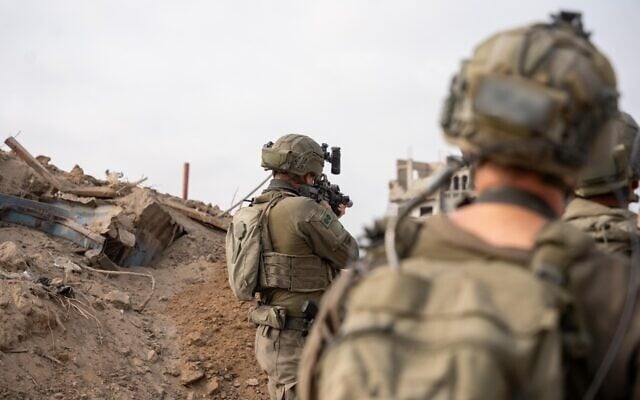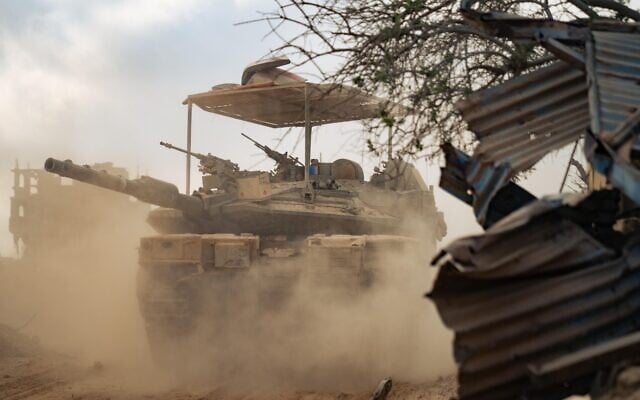


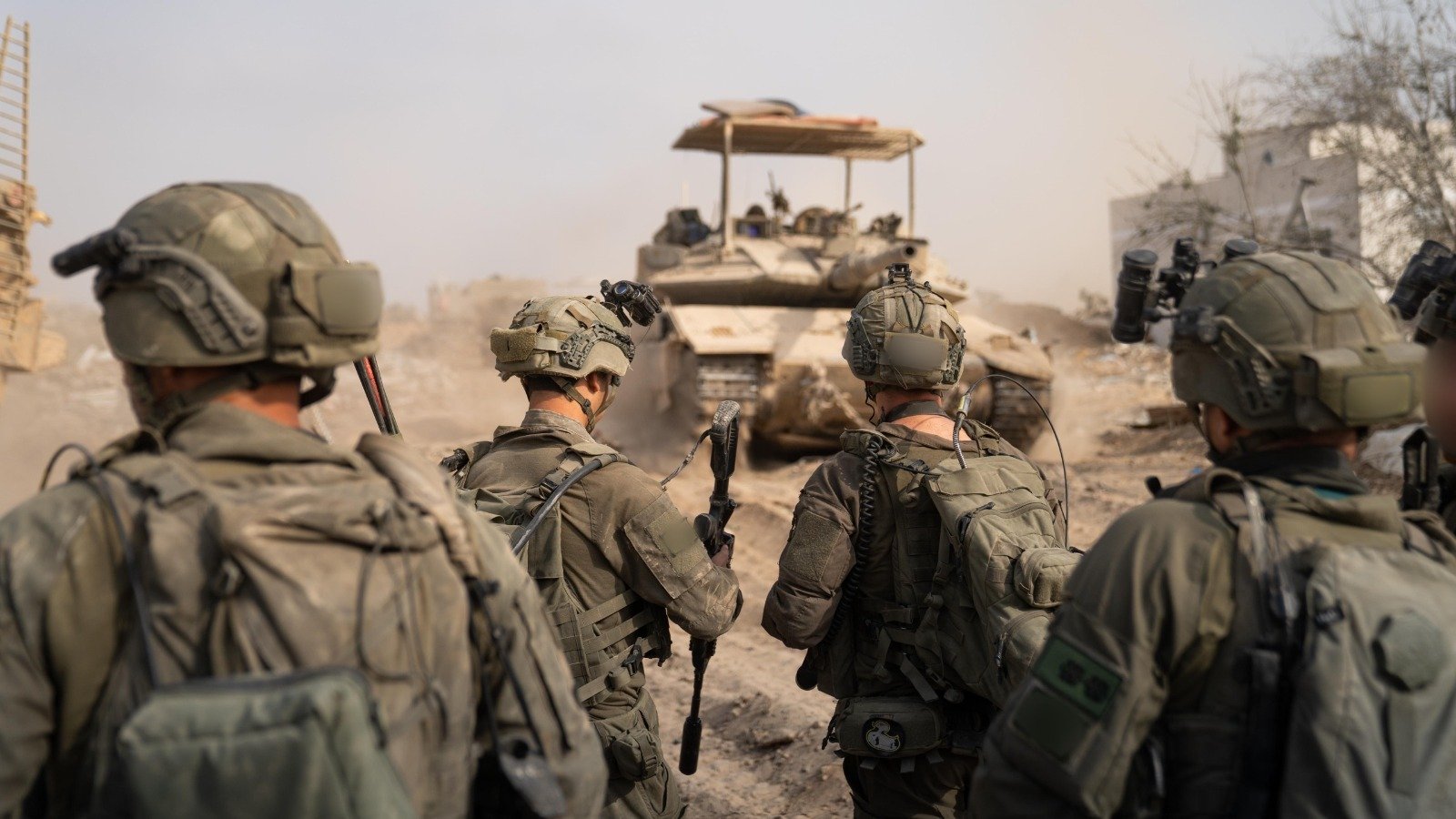
The Israeli military on Friday said it destroyed dozens of “terror targets” in its new offensive on Zeitoun on the outskirts of Gaza City, which was launched earlier in the week ahead of its planned major operation to conquer the entire city that is currently home to an estimated one million Palestinians.
The new operation in the Zeitoun neighborhood comes after Israel’s security cabinet approved the capture of the Palestinian territory’s largest city following 22 months of war that have created dire humanitarian conditions in the enclave.
“Over the past few days, IDF troops have been operating in the Zeitoun area, on the outskirts of Gaza City,” said the statement released by the Israeli military, confirming reports of ground troop movements and heavy strikes in the area.
According to the military, the Zeitoun offensive is being carried out by the 99th Division with the Nahal Infantry Brigade and 7th Armored Brigade.
The troops have so far demolished dozens of “terror targets,” including booby-trapped buildings and sites where weapons were stored, and killed some 20 terror operatives, the IDF added.
“The troops are operating to locate explosives, eliminate terrorists and dismantle terrorist infrastructure above and below ground. As part of their activity, the troops struck and dismantled a booby-trapped structure that stored weapons,” it said.
In one incident, the military said the 7th Brigade troops spotted several operatives who fired an RPG at a tank, without causing injuries. The operatives were then eliminated in a strike, according to the IDF.
The Nahal Brigade troops have meanwhile been working on clearing the area of Hamas infrastructure and establishing control. The army said the Nahal soldiers killed several operatives who were spotted planting bombs, and others who approached the forces.
Additionally, the division’s 990th Artillery Regiment has provided the ground troops with covering fire. Ahead of the offensive and during it, the IDF says the artillery unit shelled terror infrastructure and killed several operatives, including a Hamas platoon commander in the Zeitoun Battalion.
The Israeli Air Force has also been provided support, striking Hamas sites and operatives in the area.
Ahead of the operation, the IDF issued multiple evacuation warnings for Palestinian civilians who were residing in the area.
On Wednesday, Gaza’s Hamas-run civil defense agency said Israeli airstrikes on Gaza City had intensified, with the residential neighborhoods of Zeitoun and Sabra hit “with very heavy airstrikes targeting civilian homes, possibly including high-rise buildings.”
Additionally, the IDF said Friday that seven kilometers (4.3 miles) worth of Hamas tunnels in northern Gaza’s Beit Hanoun were sealed with concrete.
The IDF said the engineering effort took place over the past four weeks, amid an offensive against Hamas in the town.
Over 20,000 cubic meters of concrete were pumped into the Hamas tunnel network in Beit Hanoun, using a “dedicated system” that included a 4.5-kilometer-long (2.8-mile-long) pipeline running from the border fence near the community of Netiv Haasara to the “heart” of the underground passages, the IDF said.
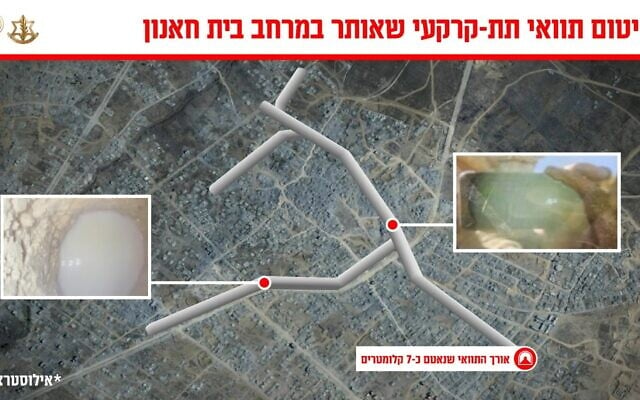
“The operation was made possible thanks to precise engineering planning, combining advanced technological capabilities and innovative methods used for the first time, which led to the complete sealing of the tunnel,” the military said.
Simultaneously, the IDF said another 2.4 kilometers (1.5 miles) of tunnels in Beit Hanoun were blown up by combat engineers using standard demolition methods.
“The two combined efforts led to a significant blow to the Beit Hanoun Battalion and led to its operational defeat,” the army added.
Sealing tunnels with concrete can be a cheaper and less risky alternative to blowing them up, although it takes longer to carry out.
Also on Friday, the UN human rights office said that at least 1,760 Palestinians have been killed while seeking aid in Gaza since late May, a jump of several hundred since its last published figure at the beginning of August.
“Since 27 May, and as of 13 August, we have recorded that at least 1,760 Palestinians have been killed while seeking aid; 994 in the vicinity of GHF (Gaza Humanitarian Foundation) sites and 766 along the routes of supply convoys. Most of these killings were committed by the Israeli military,” the agency’s office for the Palestinian territories said in a statement.
That compares with a figure of 1,373 killed, the office reported on August 1, a jump of 387 fatalities in just over two weeks.
The IDF has acknowledged firing warning shots toward those who pose a threat to soldiers, while insisting that Hamas is inflating the death count at each of these incidents. It has not provided alternative figures, though, and hasn’t allowed journalists to freely operate in Gaza in order to verify the toll.
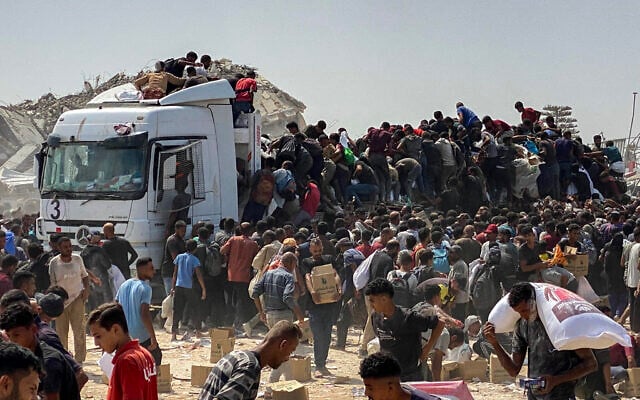
Those firing the warning shots are soldiers not trained in crowd control the way police officers are and aren’t provided with non-lethal means to employ in Gaza while they are carrying out other combat missions.
While the majority of reported deaths have taken place en route to GHF sites, the past several weeks have seen double the casualties near the convoys of the UN and other international organizations.
This appears to be tied to the ongoing chaos surrounding UN convoys, which are quickly overrun by desperate Gazans before they make it to warehouses or distribution sites. Nearly 90% of UN aid is not reaching intended destinations throughout Gaza, according to UN figures.
The latest update comes as Gaza’s Hamas-run civil defense agency says at least 23 people were killed by Israeli fire on Friday, including 12 who were waiting for humanitarian aid.
The Israeli military said it is looking into the reports when contacted for comment.
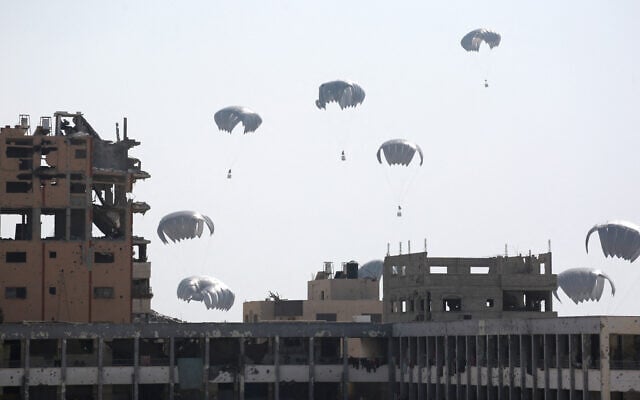
As Israel has ramped up aid efforts in the face of reports of malnutrition and starvation in Gaza, aircraft from the United Arab Emirates, Jordan, Germany, Belgium, France, Italy, and — for the first time — Singapore airdropped 127 pallets of humanitarian aid in the Gaza Strip on Friday, according to the IDF.
Each pallet contains around one ton of food.
Israel re-adopted a policy of allowing aid airdrops on July 26, amid mounting international criticism over the hunger crisis in Gaza. But airdrops are only able to deliver a small fraction of what can come into Gaza by land. They also pose safety risks for the civilians who can be hit by the packages from above.
Alongside the airdrops, over 310 trucks carrying humanitarian aid entered the Gaza Strip Thursday through the Kerem Shalom and Zikim crossings, Israel’s Coordinator of Government Activities (COGAT) said.
According to COGAT, more than 390 trucks worth of aid were also collected by the United Nations and other international organizations from the Gaza side of the crossings yesterday to be distributed.

Another 119 pallets of aid — about 4-6 trucks worth — were airdropped by Jordan, the UAE, Germany, Belgium, Italy and France in Gaza Thursday, according to the IDF.
The UN has said 600 trucks of aid need to be distributed each day in order to properly feed the Strip’s roughly two million people.
Additionally, COGAT said that “tankers of UN fuel entered for the operation of essential humanitarian systems” Thursday. It also says it facilitated the entry and exit of aid workers rotating in and out of Gaza.
The war began on October 7, 2023, when thousands of Hamas-led terrorists invaded Israel, killing some 1,200 people and taking 251 hostages.
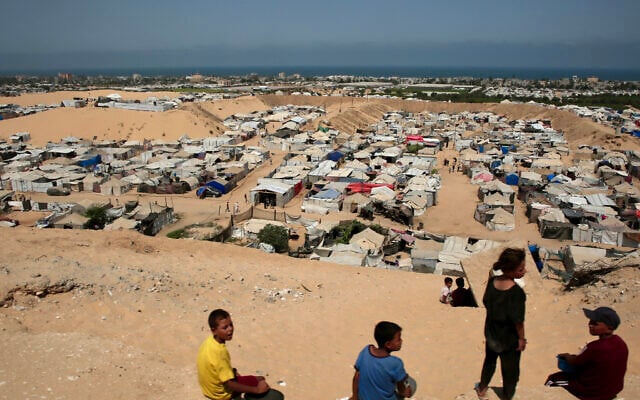
Terror groups in Gaza still hold 50 hostages, of whom 20 are believed to be alive, while 28 have been confirmed dead, and the government has expressed “grave concern” about the remaining two.
The Hamas-run Gaza health ministry says more than 60,000 people in the Strip have been killed or are presumed dead in the fighting so far, though the toll cannot be verified and does not differentiate between civilians and fighters. Israel says it has killed some 20,000 combatants in battle as of January and another 1,600 terrorists inside Israel during the October 7 onslaught.
Israel has said it seeks to minimize civilian fatalities and stresses that Hamas uses Gaza’s civilians as human shields, fighting from civilian areas including homes, hospitals, schools and mosques.
Israel’s toll in the ground offensive against Hamas in Gaza and in military operations along the border with the Strip stands at 459. The toll includes two police officers and three Defense Ministry civilian contractors.

